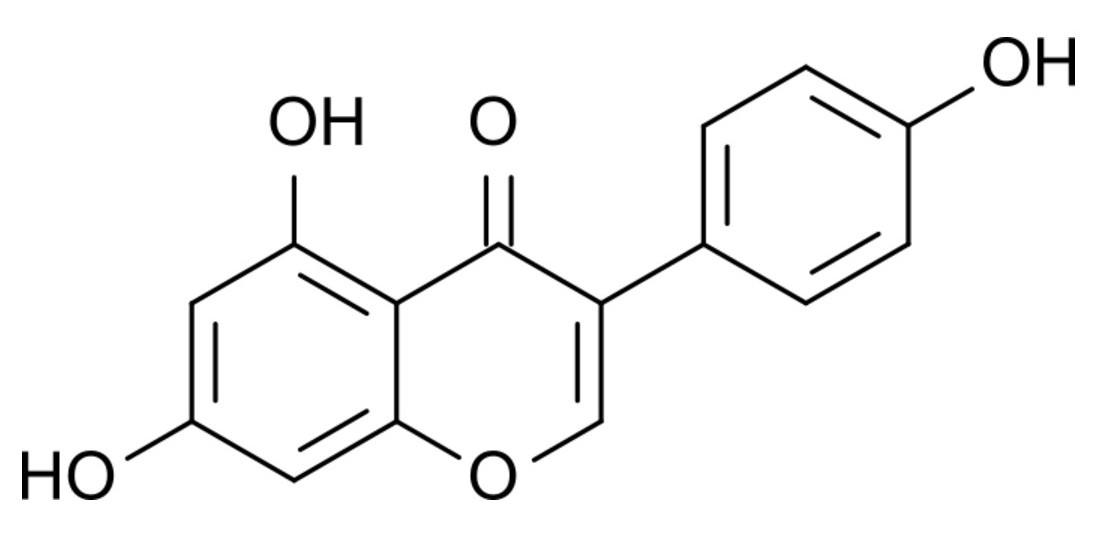Metabolism, functions and development of our body are controlled by enzymes and messenger substances. Among the messenger substances, exogenous pheromones and phytohormones play a role alongside endogenous neurotransmitters and hormones including growth factors to a lesser extent. Phytohormones have been the focus of anti-ageing skin care for quite some time.
Hormones
Hormones are divided into those that are locally active, such as prostaglandins, which are derived from the metabolites of essential fatty acids, then substances such as acetylcholine, which is derived from amino acids, and hormones with peptide and steroid skeletons. Steroid hormones include, among others:
• Progesterone (corpus luteum hormone), whose precursor is cholesterol,
• oestradiol alias estradiol,
• testosterone and its breakdown product, androstenone – a typical component of male perspiration.
From infancy through puberty and menopause to old age, the proportions of hormones produced by the body change. For example, the production of estradiol in women, along with other oestrogens, increases before and during puberty and decreases to a fraction during the menopause. Hormone replacement therapy, among other things, was developed to alleviate the effects associated with the climacteric, such as headaches, hot flushes and irritability.
In this context, it was found that Asian women suffer much less from menopause than their European counterparts. A closer look revealed one of the causes, namely a diet based on soy products, which contain polyphenolic components.
Polyphenols
Polyphenols are usually coloured compounds found in fruits with antimicrobial and antioxidant properties, which like quercetin are used as natural food colourings. The resveratrol of red wine also belongs to this group. A special feature of soy, but also of red clover, which we are familiar with, is its content of flavonoids. These are polyphenols that spatially consist of three rings, whose different linkages result in flavones and isoflavones.
Isoflavones
The isoflavones bear a distant resemblance to estradiol when placed side by side as in the case of Genestein:
 
Estradiol Genestein (Isoflavone)
Like other signalling substances, hormones need docking sites (receptors) that trigger biochemical reactions in order to perform their regulatory functions. Receptors are therefore a kind of lock into which a key (hormone) must fit in order for the door to open.

However, since the key does not fit one hundred percent in the case of isoflavonoids, only a fraction of the door can be opened. I.e. the hormonal effect of isoflavonoids ("phytohormones"), which in addition to genestein include other representatives such as daidzein and methylated compounds such as formononetin and biochanin A, is several orders of magnitude smaller than that of oestradiol. Even more, isoflavones are broken down (metabolised) completely differently than physical hormones and are free of side effects.
Anti-Aging
These properties make isoflavonoids interesting for skin care. This is because they are only locally effective in cosmetic products and are not available systemically. Accordingly, they do not fall under "substances with oestrogenic and gestagen activity" and "antiandrogens with steroidal skeleton", which are included in the list of prohibited substances of the European Cosmetics Regulation.
Cosmetically, isoflavones are classified as anti-aging active ingredients within cosmeceuticals. Cosmeceuticals are not precisely defined, but are usually more intensively studied than many other cosmetic active ingredients. This also applies to soy and red clover extracts, which show a number of interesting effects:
- Isoflavones stimulate collagen synthesis and delay collagen degradation.
- The activity of the sebaceous glands, which is increased by testosterone, is throttled. The anti-acne effect is synergistically enhanced by the carrier phosphatidylcholine.
- The local, weakly oestrogen-like effect generally leads to a smoothing of the skin, similar to that observed during pregnancy.
- The growth of the upper lip hairs in women is inhibited.
- In vitro findings suggest an inhibition of steroid-5α-reductase, the activity of which is held responsible for hair loss in men. Note: This effect has been proven for the most important flavones of green tea, epicatechin-3-gallate and epigallocatechin-3-gallate (EGCG).
- Studies suggest that isoflavones are able to inhibit aromatase. Inhibition of the enzyme that converts androgens into oestrogens is part of the treatment of female breast cancer. High levels of isoflavones in the blood plasma correlate statistically with a lower incidence of breast cancer.
- Besides antioxidant and antimicrobial effects, it is also reported to stimulate microcirculation.
It should be noted that many studies dealing with the effect of phytohormones are based on in vitro results. Missing correlations to in vivo reality are often overlooked in the daily marketing of cosmetic products.
Variable plant extracts
Depending on the provenance and processing, extracts contain isoflavones and their glycosides, in which sugar molecules are coupled to the phenolic groups of the isoflavones. They are characterised by good water solubility. Their names are confusingly similar and are then, for example, genestin and daidzin if the sugar is glucose. This has little influence on the effect, more on the type of cosmetic processing. In general, the combination with phosphatidylcholine leads to an increased availability, which is due to a temporary fluidisation of the skin barrier.
Endocrine disruptors?
The WHO defines endocrine disruptors (EDCs) as exogenous substances or mixtures that cause changes in hormone balance – in the individual organism, its offspring or in a population – and thus impair or damage health.
Naturally, isoflavones also fall into the category of endocrine disruptors. However, the European Food Safety Authority (EFSA) has given the all-clear for isoflavones. According to the EFSA, there are no indications of a harmful effect on the breast, uterus and thyroid gland of postmenopausal women. An intake of 35 to 150 mg of isoflavones daily through food and food supplements is assumed. On the contrary, the weak oestrogen effect possibly serves to prevent breast cancer.
However, a current, preliminary SCCS (Scientific Committee on Consumer Safety) opinion on daidzein states: Lack of mutagenicity data does not allow a final assessment at this time. Thus, there is a risk that all soy-based extracts that naturally contain daidzein could be considered unsafe.
Caviar & Co.
Finally, it should be reported that there have been a large number of cosmetic preparations such as fresh cell extracts, caviar liposomes, colostrum and egg products which subliminally also aimed at hormone-like effects. However, they have lost importance due to the ban on "products containing cells, tissues as well as products of human origin" and the discussion about active substances of animal origin. However, the pharmaceutical hormone creams with a lamellar DMS structure, which are available on prescription, are still booming.
Dr Hans Lautenschläger |

